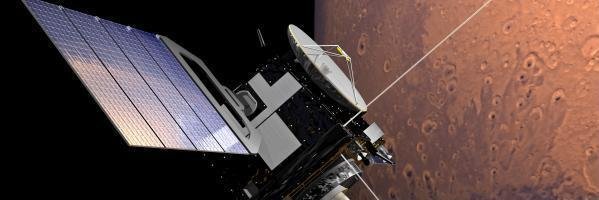
Mars Express
Mars Express is the first mission of the European Space Agency (ESA) to our neighbor planet Mars. Mars is the only other planet in our solar system that still stores large quantities of water on or near its surface. Therefore, the investigation of the water ice and the planet’s water budget will be a primary objective of the mission. The mission comprises an orbiter and a lander named Beagle 2.
On 2 June 2003, the Mars Express spacecraft was launched successfully aboard a Soyuz-FG/Fregat rocket from Baikonur and reached an interplanetary trajectory towards Mars.
The spacecraft arrived at the planet on 25 December 2003 and finally reached a Mars orbit. Two days later, Beagle 2 was successfully released from the spacecraft. Unfortunately, the lander was destroyed during landing.
The orbiter was maneuvered into a polar orbit, which has a minimum altitude of about 270 km above Mars’ surface and a maximum altitude of about 11 000 km. Since then, continuous measurements were taken on this orbit.
The MPS participates in the following instruments:
- Particle spectrometer Aspera-3
- Radar MARSIS
- High-resolution camera system HRSC











